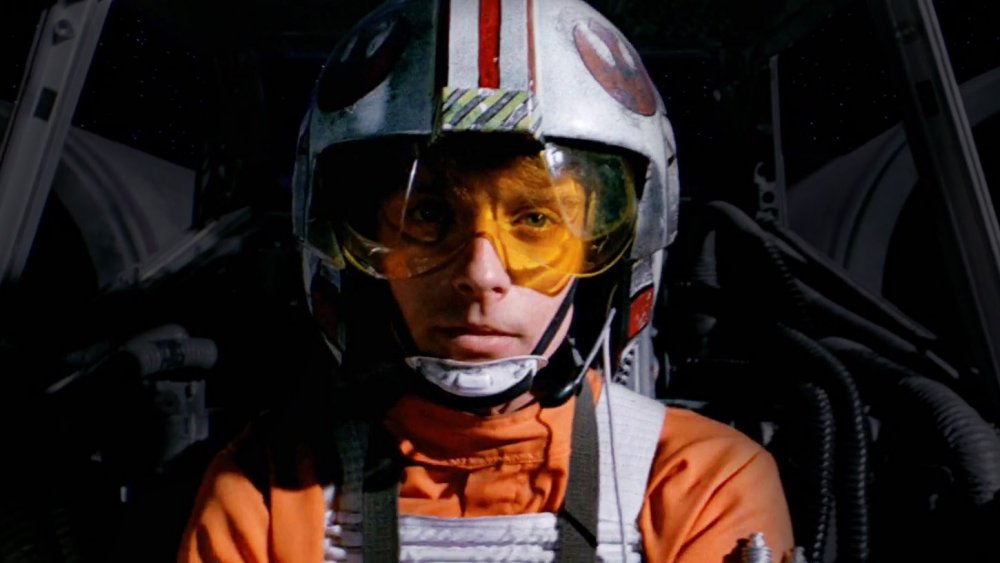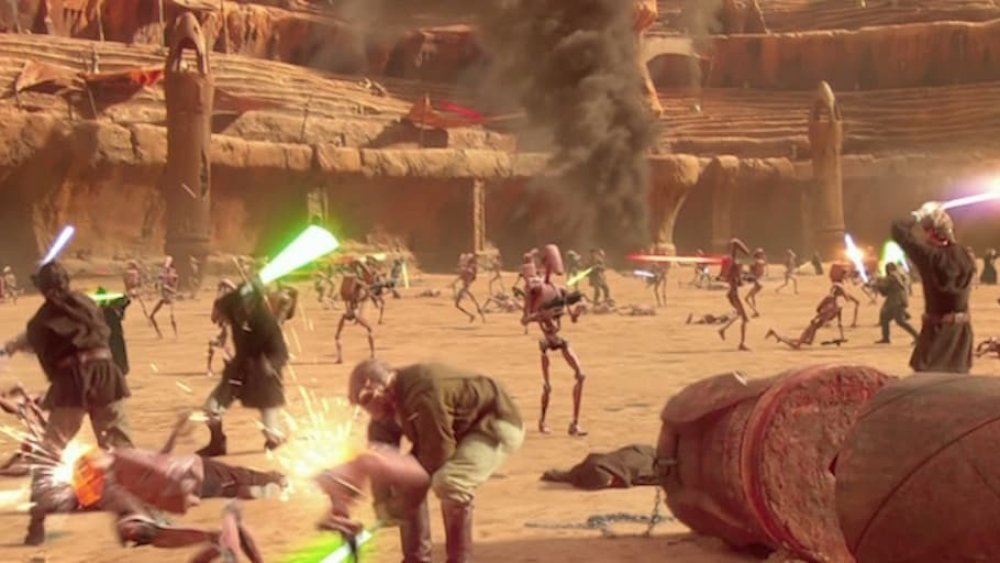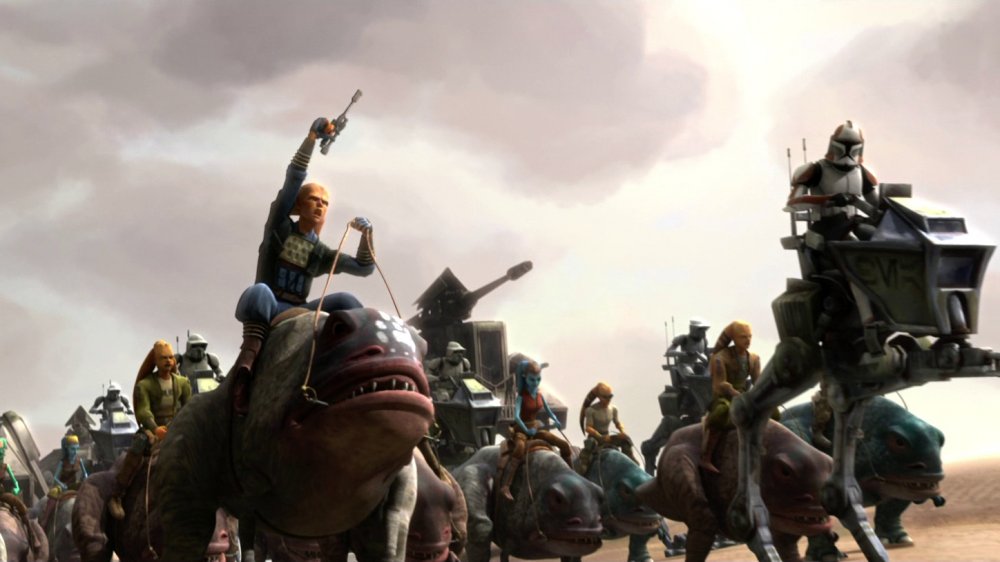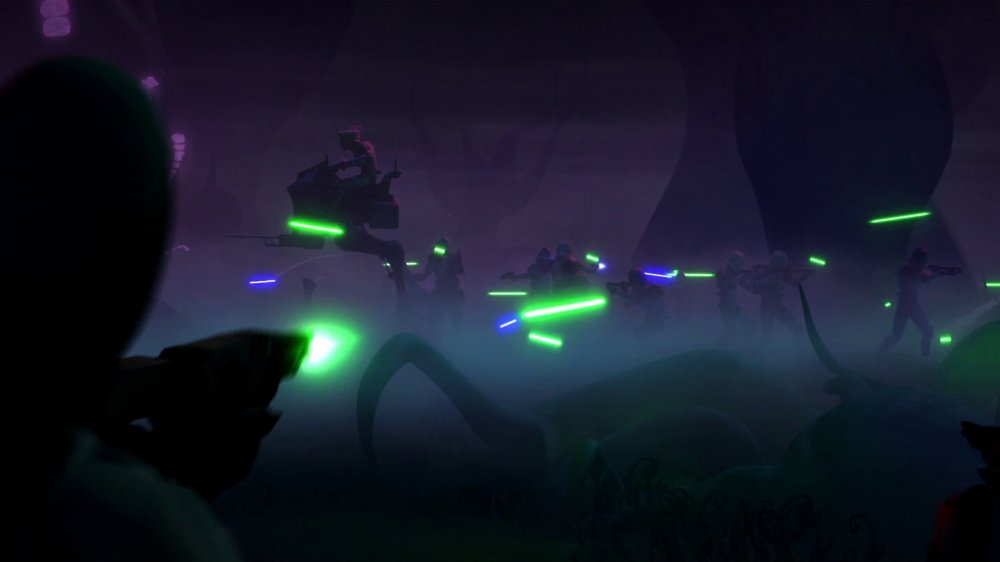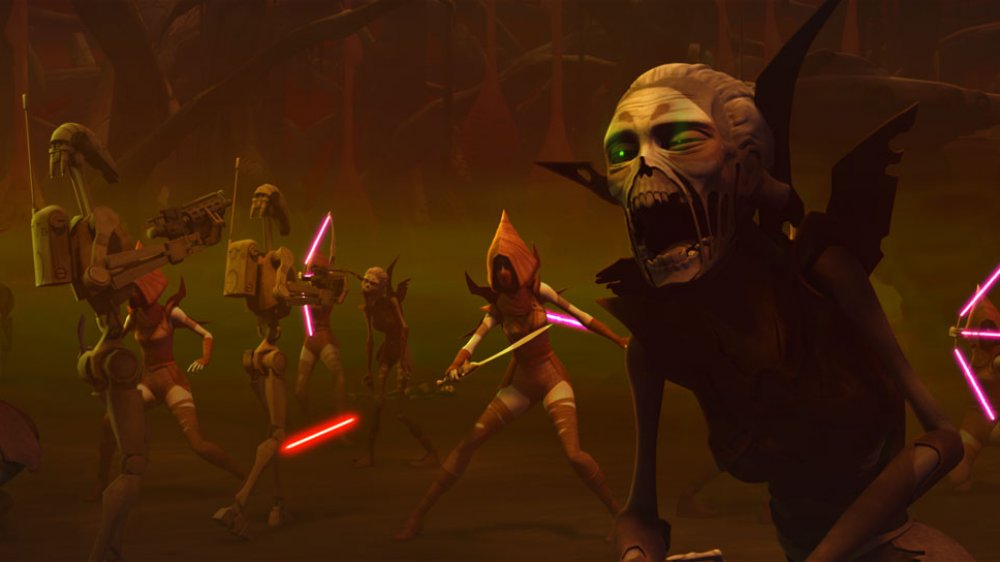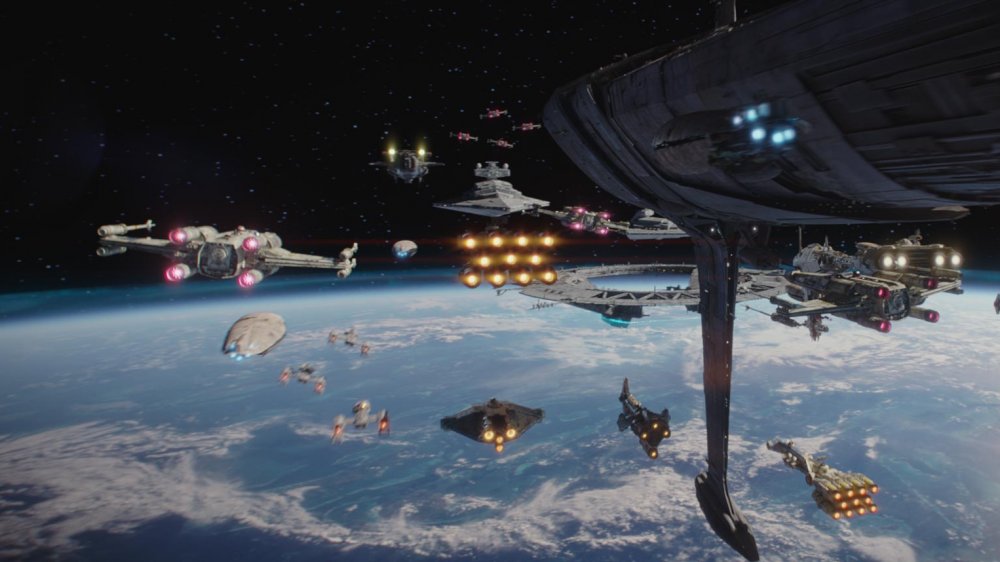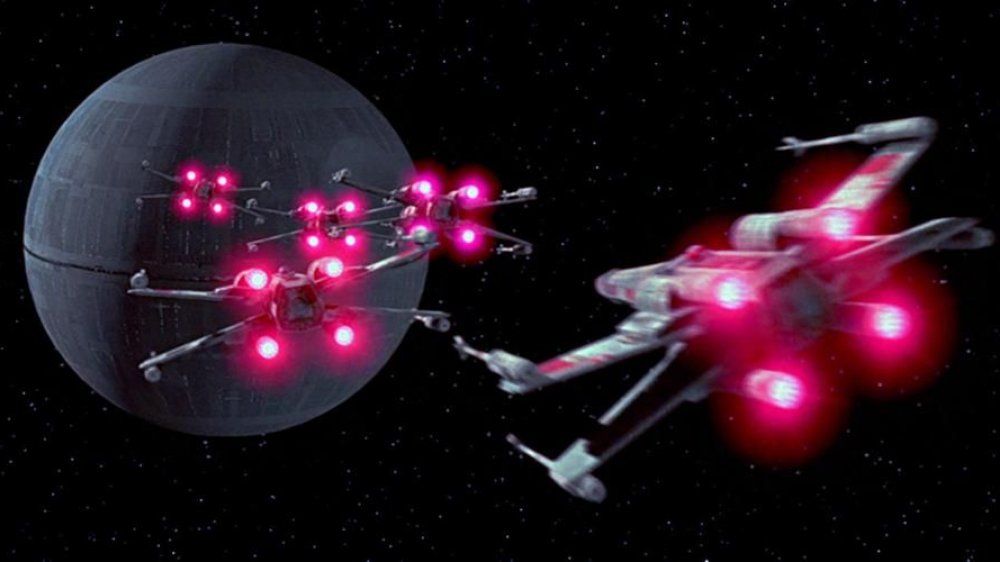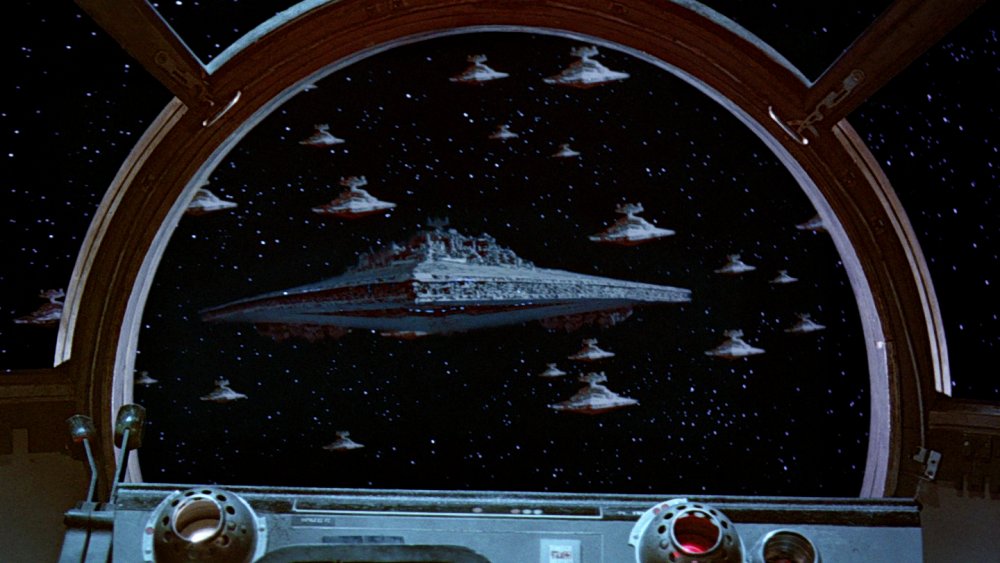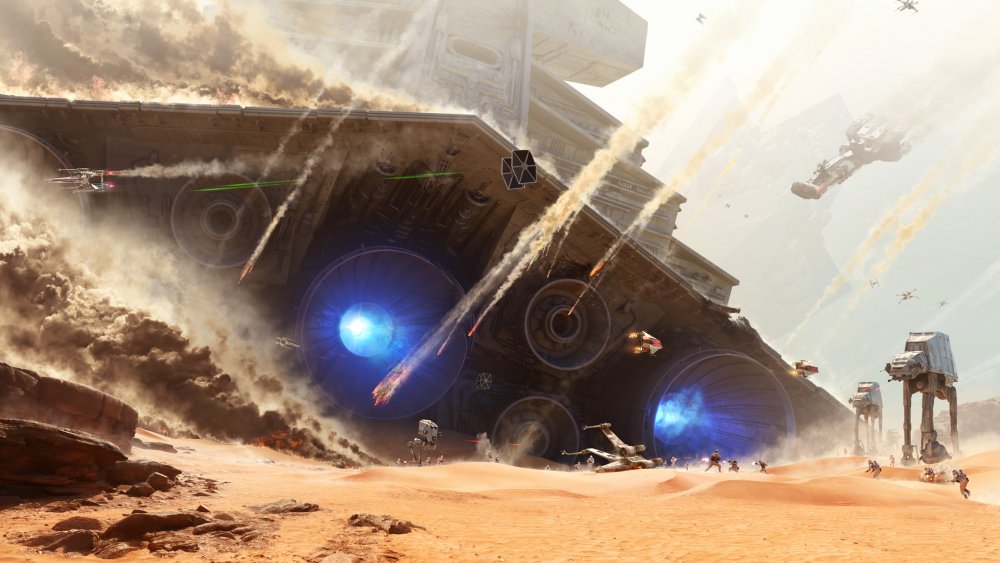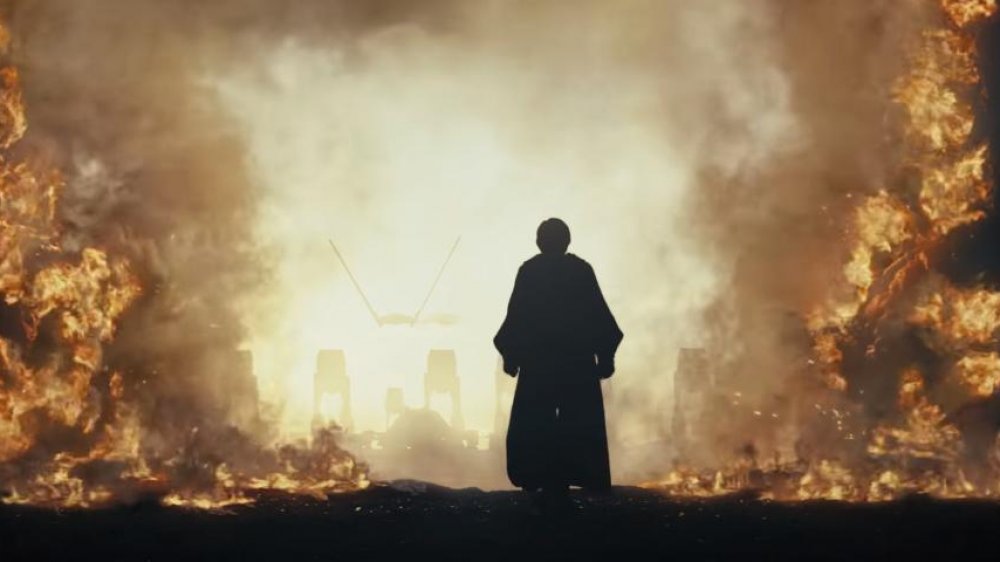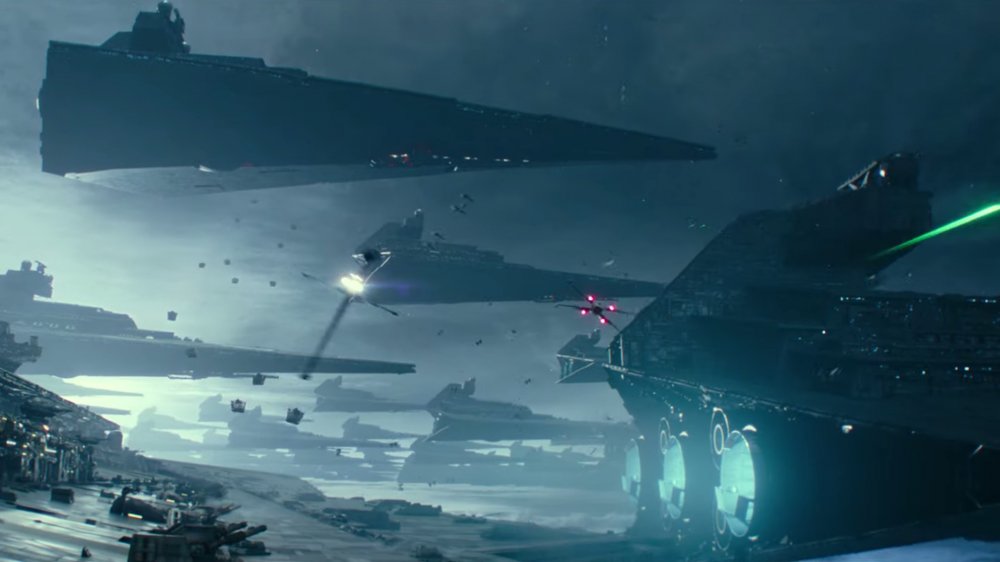The Most Epic Star Wars Battles Ever
There are a lot of battles in Star Wars, as you might expect from a franchise with "wars" right there in the title. The franchise as a whole documents a series of struggles between good and evil for control of the galaxy far, far away, and those range from small-scale skirmishes to epic, planetary conflicts with the fate of trillions of people at stake.
Over the course of more than 40 years we've watched as the new Republic battled the Separatist forces in the Clone Wars, seen the David and Goliath clashes between the Rebel Alliance and the Galactic Empire in the Galactic Civil War, and witnessed the rise of the First Order and its battles with the Resistance in the wake of the Starkiller Base Incident. Through it all, the franchise has consistently provided us with massive, thrilling, paradigm-shifting battles across the galaxy. Now, it's time to talk about the best. These are the most epic battles in Star Wars canon.
The Battle of Geonosis
One of the great draws of the Star Wars prequels was its promise to show us the last great period of strength for the Jedi Order, and the trilogy delivered on that right away with the Jedi feats in Episode I – The Phantom Menace. It wasn't until Episode II – Attack of the Clones, though, that we finally got to see what the Jedi could do when they deployed in force, and it was a sight to behold.
The Battle of Geonosis unfolds after Obi-Wan Kenobi discovers a gathering of Separatists on the planet led by Count Dooku and Nute Gunray. Kenobi's capture ultimately draws dozens of Jedi led by Mace Windu to the site to engage in a battle with the Separatists. This fight would be epic enough if it were just the Jedi doing the fighting as a unit, but then Yoda ups the ante by showing up with the Republic's brand-new clone army. With that, the Clone Wars, began, and Star Wars would never be the same.
The Battle of Ryloth
While Attack of the Clones introduced us to the Clone Wars that were referenced all the way back in the first Star Wars film, the war itself was largely kept out of live action. Thankfully, the gap between Episode II and Episode III of the live-action saga was filled in by a truly epic animated series that delivered on its ability to depict the massive scope of a galactic conflict time and time again.
The Battle of Ryloth was one of the earliest examples of The Clone Wars' grand scale, arriving in the climactic episodes of the show's first season. The battle featured the Republic army — led by Generals Mace Windu, Obi-Wan Kenobi, and Anakin Skywalker — joining with the Twi-lek freedom fighters native to the planet to liberate Ryloth from the grip of Separatists who'd conquered and pillaged. From the opening efforts to break the blockade to a battle on the edge of a cliff to the final triumphant recapture of Ryloth's capital city by Windu and his troops, this one set a high bar for the future of Clone Wars battles.
The Battle of Umbara
One of the greatest assets The Clone Wars had was a creative team that seemed to be constantly dreaming up new ways to surprise the audience in terms of how a battle might go. Just setting up the two sides and having them clash season after season wasn't enough, particularly when we already knew how the greater conflict would resolve. There had to be tension within each strategic move, and The Battle of Umbara in season 4 is a great example of that.
The battle is joined when Republic troops arrive on Umbara, led by a number of Jedi Generals including Kenobi and Skywalker, to retake the planet after it seceded from the Republic to join the Separatists. The battle is immediately compelling thanks to Umbara's dark, fog-shrouded appearance as the Republic troops first land, but things really get interesting when it's revealed that Jedi Pong Krell has betrayed the Republic in order to court Count Dooku's favor. Krell's turn, and the resulting personal nature of the rest of the battle, adds an extra layer of intrigue to an already epic clash, and really ups the ante of this particular stage of the war.
The Battle of Dathomir
Most of the major battles fought in The Clone Wars are between the Republic and the Separatist forces, but every once in a while the show would switch things up in a really compelling way. The Battle of Dathomir in the show's first season is a great example of this, because it features a battle between two factions operating outside of the Republic.
The catalyst for the battle was Darth Sidious' order that Count Dooku kill his apprentice Asajj Ventress because Sidious feared she'd grown too powerful. When his first attempt failed, Ventress fled to her home planet Dathomir and plotted her revenge with the help of Nighsister leader Mother Talzin. In response, Dooku ordered General Grievous to wipe the Nightsisters out.
This particular battle is relatively brief compared to other key Clone Wars clashes, but its heavy use of Nightsister magic gave us things we'd never seen before in a Star Wars series. The moment in which Mother Talzin unleashes an army of undead Nightsisters on Grievous' forces remains one of the most frightening things in all of Star Wars, and Grievous' efforts to massacre the Nightsisters make the battle one of the most consequential in the franchise.
The Battle of Scarif
Rogue One: A Star Wars Story earned a devoted following among Star Wars fans when it was released in 2016 in no small part because it put the "war" in Star Wars in ways many of the other films simply never did. This was a conflict largely removed from the affairs of the Jedi and the Sith, instead focusing on a group of desperate warriors trying to accomplish something galaxy-altering.
This all culminated in the Battle of Scarif, as Jyn Erso and her crew fought to steal the Death Star's plans on the planet itself and the fledgling Rebel Alliance navy engaged the Empire from orbit. The battle is full of absolutely thrilling moments, from the Hammerhead Cruiser's efforts to open the planetary shield above Scarif to Admiral Raddus' leadership to the arrival of the squadron leaders we all remember from A New Hope. While the Battle of Yavin was a bigger symbolic victory for the Alliance, the clash at Scarif proved that resistance to an Empire was not only possible, but perhaps preferable.
The Battle of Yavin
By the standards of many other Star Wars battles both before and after it, The Battle of Yavin is a pretty small affair. It's basically just a couple of Rebel Alliance fighter squadrons facing off against the Death Star and its own fighter squadrons and turbolaser batteries. There are no capital ships engaged in the battle, no major fleet movements, and the only real point of attack is a narrow trench. What makes it epic is not the size, but the stakes.
The setup for The Battle of Yavin is simple: Hit one small target on the Death Star and destroy the whole thing, but do it before the battle station is close enough to destroy the Rebel base. So, we have a simple but difficult objective, a ticking clock, and a scrappy group of pilots each taking turns at hitting the target. The tension is palpable from the moment the fighters begin their approach, and the film keeps ratcheting it up via pilot deaths and the terrifying arrival of Darth Vader. All that tension keeps winding up right up until Han Solo's heroic return, and by the time it's over you're left with one of the most triumphant space action sequences in movie history.
The Battle of Endor
Return of the Jedi, the final film in the original Star Wars trilogy, took a big risk by creating a second Death Star as a major threat, and the risk was simply repeating the heroic fighter run of A New Hope. By the time the Battle of Endor actually unfolds, though, it's clear that risk paid off.
This battle, like the Battle of Scarif before it, depends on success both on the surface of Endor and in space above it, as Han Solo and his team of Rebel soldiers (with a little help from the Ewoks) try to deactivate the Death Star's shield generator long enough for Lando Calrissian, Admiral Ackbar, and the Alliance fleet to destroy the station. That alone is enough to create a tension-filled climactic sequence, but then our heroes come face-to-face with Emperor Palpatine's trap. The Empire is prepared to meet the Alliance with both a legion of stormtroopers and a massive fleet of their own, and for a little while it truly does feel like it might be the end of the Rebellion. But of course, our heroes pull through, and they do it in spectacular fashion. The Super Star Destroyer crashing into the Death Star's surface — showing us the scale of the Imperial war machine even as it falls — remains an unforgettable sight.
The Battle of Jakku
If you're just watching the Star Wars films, it seems like the Galactic Civil War effectively ended with the Battle of Endor, the destruction of the Death Star II, and the death of Emperor Palpatine. In reality, though, the war raged on for another year as the New Republic attempted to consolidate power while fighting off the remnants of the Empire under some of Palpatine's top military leaders.
This struggle culminated in the Battle of Jakku, the last major battle of the war, waged on the desert planet which appeared most famously in Star Wars: The Force Awakens, where the ruined starships still stood out on the desert landscape. Under the leadership of Gallius Rax, the remainder of the Imperial fleet made a rather effective last stand against the New Republic fleet in orbit above the planet as part of the final stages of Operation Cinder, the Emperor's plan to annihilate both the remnant of the Empire and the New Republic in a bid to break the entire tactical game board of the galaxy. That particular plan didn't quite succeed, but the resulting infighting among Imperial officers led to the eventual formation of the First Order. The dramatic consequences of the battle, plus the sheer scope of the conflict, made it a truly epic clash.
The Battle of Crait
Like the Battle of Yavin before it, the Battle of Crait as depicted in Star Wars: The Last Jedi is a rather small-scale conflict, featuring just a handful of Resistance fighters facing off against a large First Order assault force that included walkers, snow troopers, and Kylo Ren's personal command shuttle. What made the battle so significant was the First Order's chance to snatch survival from the jaws of defeat.
The battle began as General Leia Organa was waiting to hear the results of a call for help that would hopefully save the Resistance, but when no help came, Leia was prepared to face the end of her fight in a last stand. That all changed when her brother Luke Skywalker arrived to face down the First Order force and Kylo Ren himself. Skywalker's presence, later revealed to be a Force projection, flummoxed Ren and delayed the First Order assault long enough for the Resistance to escape and fight another day. Though the Resistance fought on, Skywalker did not fight with them. The energy it took to project himself through the Force ultimately killed him, adding even greater consequence to this particular fight.
The Battle of Exegol
Star Wars: The Rise of Skywalker is the film intended to not only close the sequel trilogy that began with The Force Awakens, but to close out the entire nine-film Skywalker Saga. That meant the storytelling stakes were high, and that meant we were due for a truly massive final battle. Even if the film delivered on nothing else, it's hard to deny the sheer scope of the Battle of Exegol.
The battle is set up by the surprise presence of the Final Order, Emperor Palpatine's secretly constructed fleet of new Star Destroyers which will soon be deployed to terrify the galaxy into submission. For much of the film, it seems that the Resistance — still quite small after its losses in The Last Jedi — has nothing that can possibly match it, but they have to try to fight anyway. What starts with a clash that feels like a guaranteed loss then turns into a battle for the ages, as Lando Calrissian shows up with a massive fleet of volunteer ships that are able to first match and then defeat the Final Order fleet. From Lando's triumphant arrival to the ride across the surface of the command ship, it's one of the biggest, most ambitious Star Wars battles ever mounted.
